
A relaxing weekend in the Eastern Algarve
We woke up at 4:30 a.m. to find a thick blanket of fog hanging over all of Porto. Sleepily, we went through the motions. Shower, last-minute packing, grab the free soap, scour the Airbnb for anything left behind. We donned our warmest clothes–jeans, hoodies, flannel–but still winced when we opened the door and a rush of chilly, damp air greeted us.
We sped north in the dark, barely registering the Italian pop music blaring from our cab’s speakers. The train station was sterile, cramped and barely open at this early hour. Our hopes of grabbing a hot coffee at the snack stand were immediately dashed.
But we didn’t care much. After all, we were on our way to the Algarve.
Anyone who knows a little about Portugal’s southern coastline probably hears the word “Algarve” and immediately conjures mental images of Cancún-like resorts and thumping clubs packed with European twentysomethings.
But the truth is, the Algarve contains multitudes. Sure, in the height of summer, the central region’s countless resorts and overpriced pubs fill up with holidaymakers. But travel far enough east or west and you’ll find wild landscapes, untouched beaches and blissful quiet…sometimes even in August.
Frankly, our last days in Porto had been so cold that I probably wouldn’t have cared if the beach we picked was strewn with red cups and coeds, so long as it was warm. But in retrospect, I’m glad we traveled off the beaten path in search of peace…because we found it in spades.
We’d found Forte de São João da Barra in a hotel search many, many months before our trip, and we couldn’t let it go. The 17th-century fort’s quiet, whitewashed austerity was unique and beautiful. Its location, right along the water and wildlife of the Ria Formosa Natural Park and a two-minute boat ride away from an expansive island beach, was perfect. And the others who had visited, judging by their reviews, seemed a lot like us–people looking for a mix of culture, nature and good old-fashioned beachgoing.
Our stay at the fort was by far our biggest splurge in Portugal. In a country where $60 buys you a night at a small, stylish Airbnb in a nice neighborhood, we felt a little silly plunking down more than twice that.
Until we arrived.
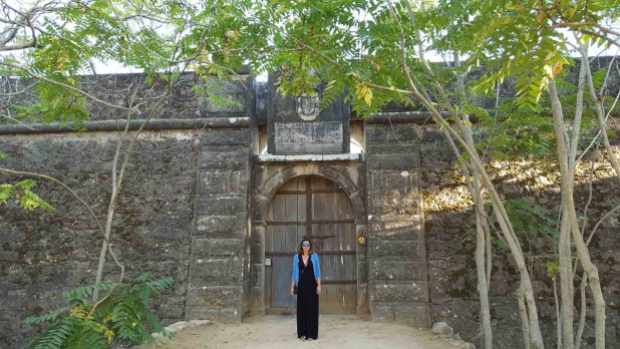
The minute we stepped through the (comically tiny) front door and gazed out at the sun-soaked courtyard, I swear I felt my whole body relax. The whole place was still, save for some palm trees rustling in the breeze. Everything was simple and spare–an old well in the center, some fading bougainvillea creeping up the stone wall of the main house, not much else. There were no car horns or children’s voices, no music or sirens. For a moment, it was as if we were the only two people in the world.
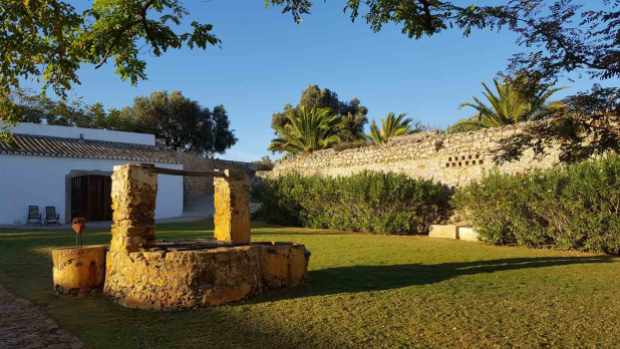
Then we met Cecilia, the hotel manager and the sassy grandmother you always wanted. We were too early for check-in, but she ushered us into a room anyway. (“Where are your bags? What, that’s it?” she said as she spied our two backpacks.) A half hour of chatting later, we were up to speed on local land disputes, in the know about the best restaurants in town and furnished with towels and umbrellas for the beach.
There were only a few hours of sunlight left, so we headed straight to the sand. In high season, the hotel ferries passengers over to the beach on its own boat. But we were there in low season, so instead we walked five minutes west to catch the town ferry, which pretty much operates on demand as long as the weather’s good and there’s no Primeira Liga football on TV. (Seriously.)
The boat ride took all of 90 seconds and docked at the barrier island’s north side. After a short walk on an elevated ramp through grassy dunes, we grabbed beers at the subdued snack shack and set up camp on a sparsely populated stretch of sand.
A couple of blissful hours later, we headed back to the fort to watch the sky darken from the old battlements, now used exclusively for lounging and pool swimming rather than for defense. I put down my book and just stared ahead, still captivated by the place’s eerie calm.
Once we’d worked up an appetite, we strolled down the town boardwalk to a no-frills seafood restaurant Cecilia had recommended. It was probably the least touristy dinner we’d experienced thus far, and for that we were grateful: We actually got to practice speaking some Portuguese!
The next morning, we found the outdoor breakfast area deserted save for one other guest. We happily sipped coffee and juice and munched on fruit, yogurt, bread, cheese and sweet treats at a table overlooking the water, laughing at the reviews that had complained the breakfast selection wasn’t adequate.

It was another warm, sunny day, so we immediately set off to the beach again. The wind was strong that day, though, so we set up towels and snacks farther inland among the sand dunes, where the gusts were nothing more than light breezes. It was the perfect setting for a lazy day of swimming, reading, napping and making shell art.
Once my skin was good and crispy (whoops), we crossed the water back into town to secure a dinner reservation at Noelia & Jeronimo’s, the best restaurant in town and quite possibly the entire region. If you visit Cabanas without eating here, you’re doing life wrong. We had squid-topped risotto and seared tuna on mango rice, respectively, and it was pure heaven. We both agreed it was the best dinner we had in Portugal.
Our third day at the fort was cool and cloudy. We skipped the beach–the ferry probably wasn’t running anyway–in favor of a day trip to nearby Tavira. This charming cobblestoned town is effectively the capital of the Eastern Algarve, and it’s a pleasure to get lost in the small maze of streets here.
A light rain started to fall as we left the train station, so we killed some time by ducking into some cute gift shops on Rua Liberdade. After the rain passed, we explored the attractive main square, Praça da República. The cobbled amphitheater and stately stone bridge matched the steely sky, and the pool-like fountain seemed piercingly blue in such gloomy light.
As we wandered through a nice public garden, sun-induced sleepiness from the day before began to take hold. We were determined to see more, though, and after a quick espresso, we set our sights on the highest point in town.
Tavira’s castle dates back to the 1200s, but it’s not much more than a few ruined walls these days, thanks to the 1755 earthquake that also wiped out Lisbon. There’s not much of the castle itself to see, but the view from the top can’t be beat, and the gardens inside are lovely.
As we wound our way back down through the town’s quaint tangle of lanes, we grew even more tired and resolved to leave soon. But there was one more thing I had to see before we went, and it was a bit off the beaten path.
Tavira’s Biblioteca Municipal Álvaro de Campos isn’t your average public library…because it used to be the town prison. About a decade ago, the long-neglected building’s cell walls were knocked down to make room for a large, light-filled book gallery. Its stern front facade still stands and today serves as a noise-blocking cafe courtyard. The new entrance’s corten steel and glass design works so well with the original facade–both are minimal and angular, unobtrusive yet statement-making. The architect apparently wanted his remodel to be like a book itself: attractive enough on the cover to draw inital attention, but enigmatic enough to pull the reader in long-term.
By now, we admitted to ourselves that it was time for a nap. We headed back to the fort for a few hours of much-needed rest–including, for me, a relaxing bath.
That third night in town was eerily quiet, even by Cabanas standards: Bad weather really does seem to shut the whole place down. We passed absolutely no one on the way to dinner, so it was surprising to find our restaurant of choice, Cecilia’s third and final recommendation, not only open but also buzzing with business. We were thrilled we finally had an opportunity to order the seafood cataplana, an Algarve specialty. The giant stew, which typically contains three or four types of whatever seafood is freshest that day and some hearty vegetables, arrived at our table piping hot and still in its round copper pot, as is tradition. We ate happily until we couldn’t move.
And just like that, our time in the Eastern Algarve was at an end. In retrospect, I could have spent a week here, rain or shine; there are so many charming towns, beautiful beaches and natural wonders to explore. I hope we’re back someday.


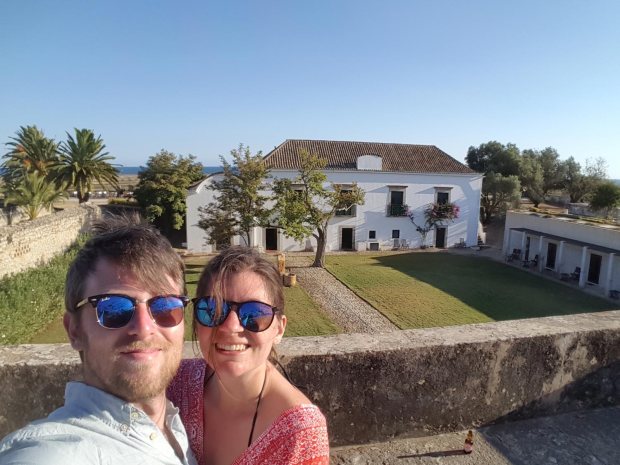
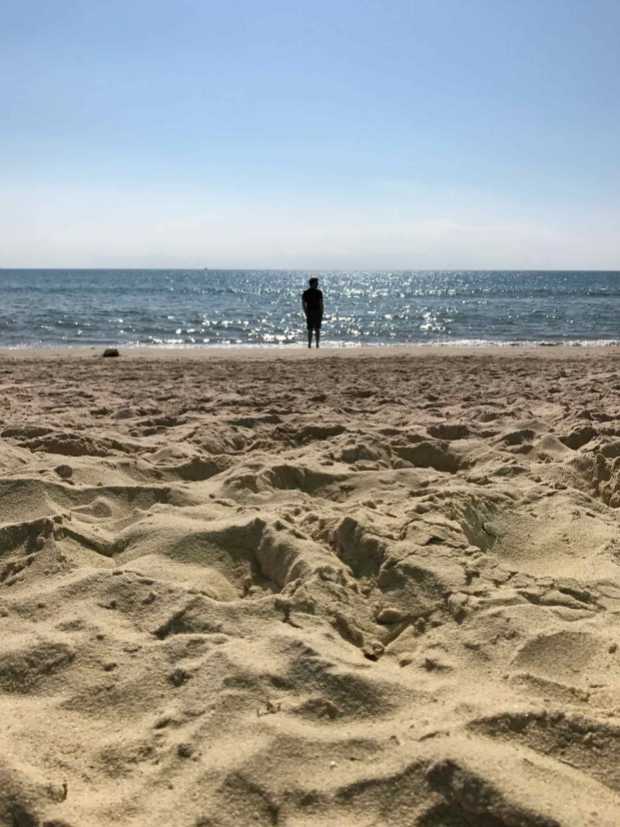
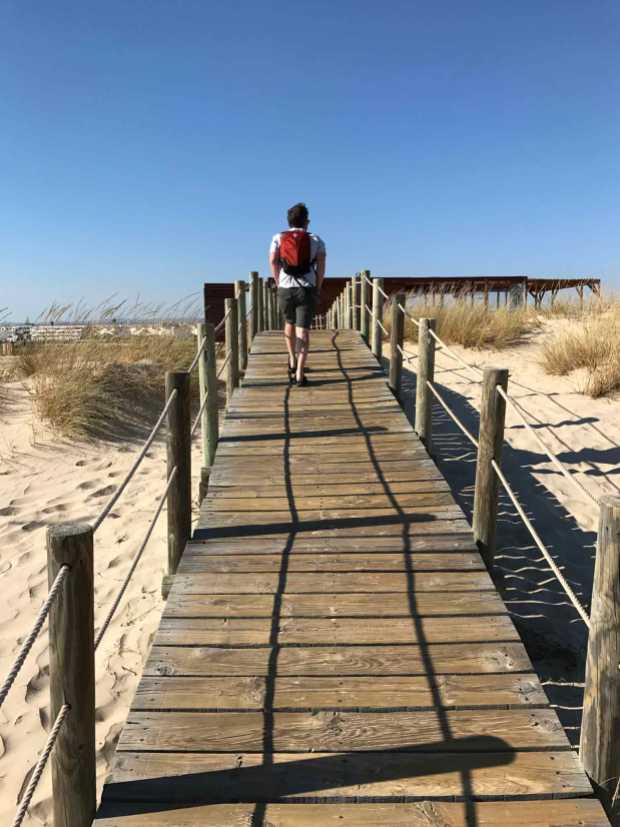
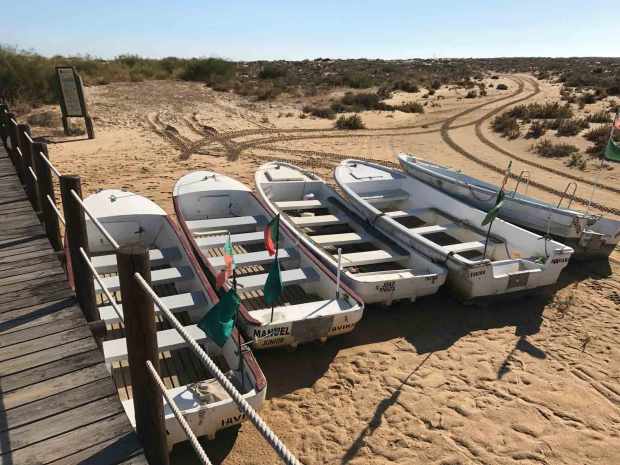

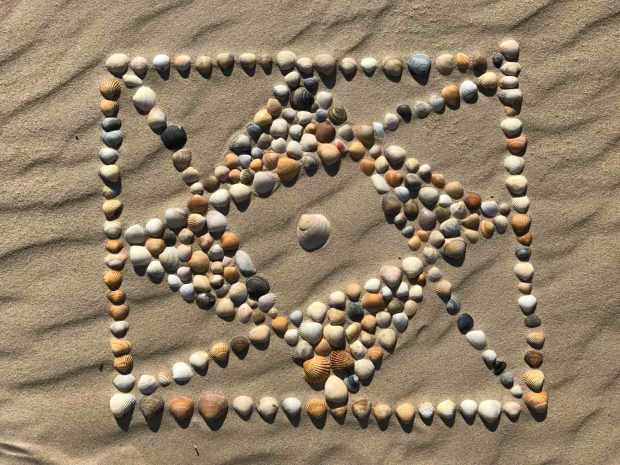

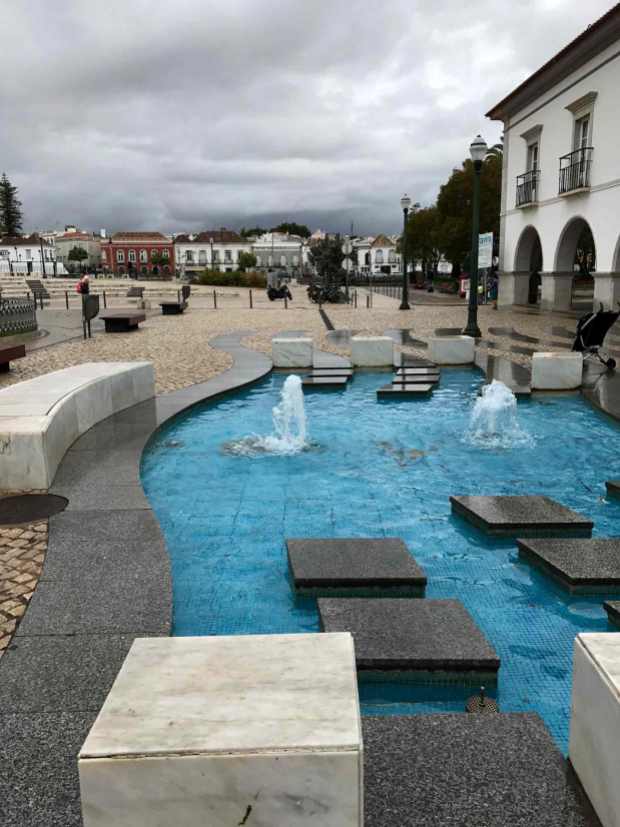
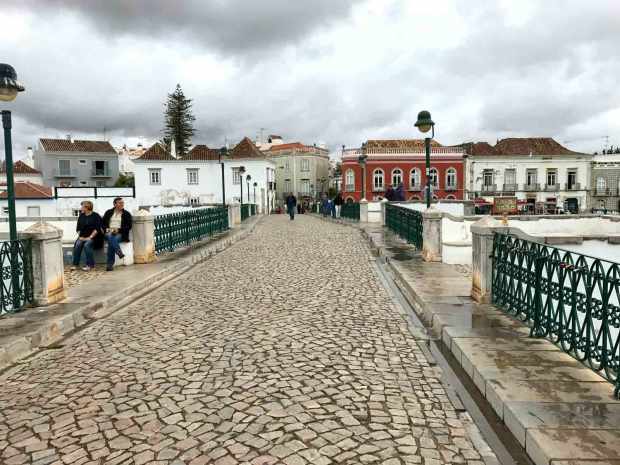
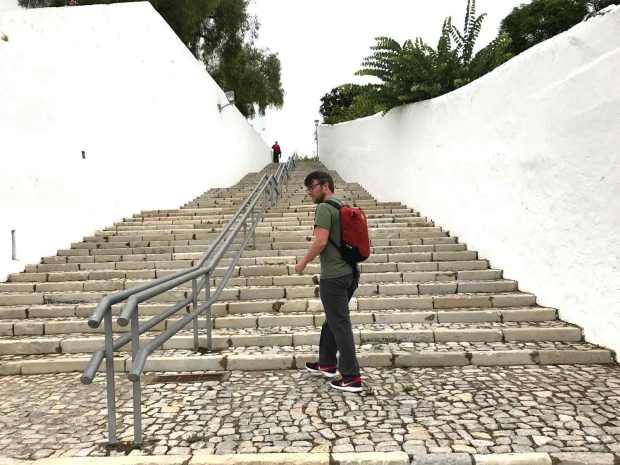

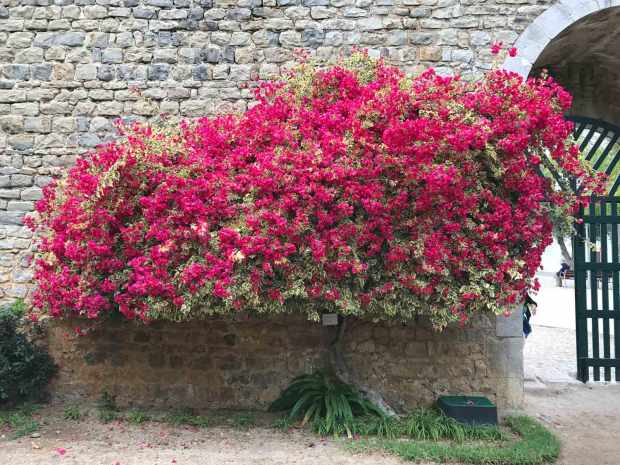
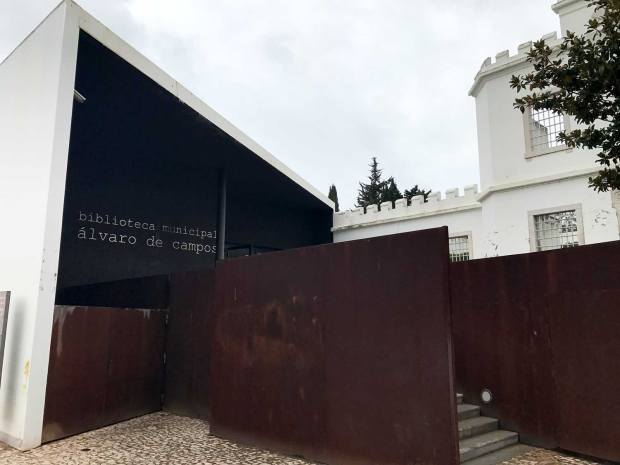
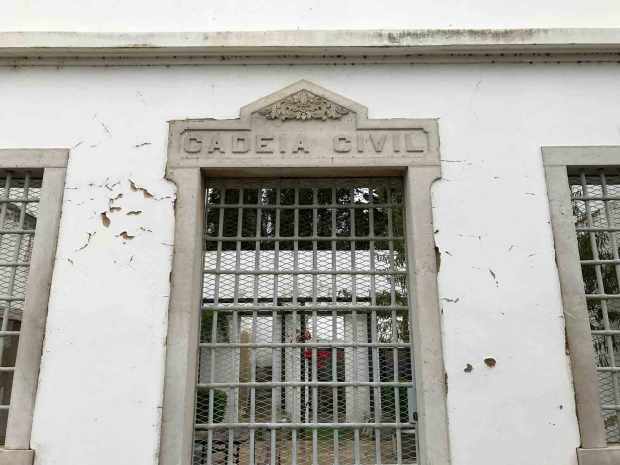

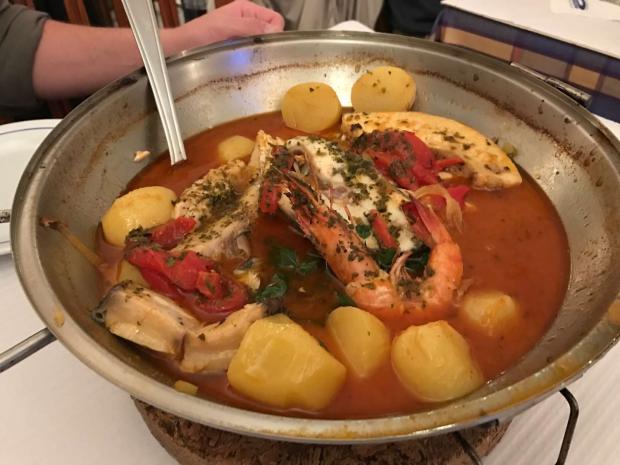






Comments (4)
Kayaking in Lagos, Portugal – Jill Kimball
September 1, 2017 at 4:45 am
[…] to just one place for five days, we split up our coastal time into three parts: three days of beach-bumming in sleepy Cabanas, one day kayaking in scenic Lagos, and one day sightseeing in Faro, where we’d catch a direct […]
BeckyB
November 20, 2017 at 8:29 am
Oh you’ve summed up the east perfectly. So glad you discovered the real Algarve. If you enjoy walking then return in late January/February and stay in the hills. They turn almost white in places with Almond Blossom, looks wonderful and smells of honey. Truly wonderful.
Jill
March 21, 2018 at 1:40 am
That sounds amazing! I confess I almost wanted to stay up in the hills more than on the water–all those chic farmhouses surrounded by fruit orchards looked irresistible!
BeckyB
March 21, 2018 at 6:34 am
Next time!!
Comments are closed